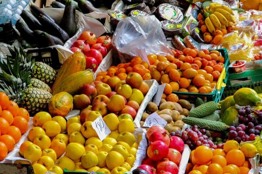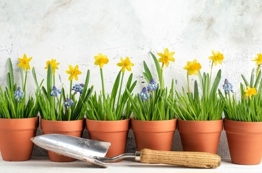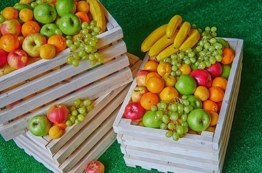The arba minim during the shemitah year

Can we use arba minim that grew during the shemitah year? How do we tend to them? Buy or sell them? Plus: special halachot related to etrogim during and after shemitah. Chapter 15 of the Consumer's Guide to Shemitah.
A. Tending to the arba minim
- One should try to perform all pruning activities necessary for the arba minim before Rosh Hashanah of the shemitah year and after Rosh Hashanah of the eighth year.
- Etrogim
- Hadasim
Hadasim should not be burned or trimmed during the shemitah[3] However, during the harvest performed for Sukkot, it is possible to trim hadasim as low as possible, even during the shemitah year.[4] - Aravot
- Aravot should be clipped before Sukkot in a way that is not the best for the tree, such as unorganized trimming.
- Aravot should not be trimmed before Rosh Hashanah of the eighth year to enhance branch growth.
B. Shemitah sanctity
- Etrogim harvested for Sukkot have shemitah This is true for etrogim harvested during the shemitah year and during the eighth year.[5]
- It is permissible to use a shemitah etrog for the arba minim despite the fact that it somewhat harms its peel.[6]
- Lulavim and aravot do not have shemitah. Some maintain that hadasim do.[7]
C. Buying and selling the arba minim
- While fruit that is guarded or for which prohibited activities are performed for are permissible to eat (shamur and ne'evad, respectively, see Chapter 8), to avoid assisting sinners one should purchase the arba minim only from growers who raise them in a halachically permissible fashion. For this reason:
- It is permissible to purchase etrogim only from those who grow and sell them as rabbinical court agents or through heter mechirah.
- One should avoid purchasing the arba minim from people who sell them in a prohibited manner. [8]
- Optimally, etrogim sold through the otzar beit din should be sold at a fixed price, regardless of whether they are standard or mehudar.[9]
D. Terumot and ma'aserot
- For etrogim that reach chanatah during the sixth year and are harvested during shemitah, terumot and ma'aserot should be separated without a blessing (to account for the opinions that the etrog's status is determined only by chanatah).
- In contrast, etrogim that reach chanatah during shemitah and are harvested during shemitah are exempt from terumot and ma'aserot.
- For etrogim harvested during the eighth year, terumot and ma'aserot should be separated without a blessing (even though they have shemitah sanctity; see above §B.1).[10] Nevertheless, one should still give ma'aser rishon to a Levi so that there will be no question that the etrogim belong to the owner.[11]
E. Exporting abroad
- It is permissible to export etrogim for the mitzvah of the arba minim after the time of bi'ur,[12] or well before the time of bi'ur when it is clear that the fruit will not last outside of Israel until the time of bi'ur. Following the holiday, it is recommended to eat the etrogim (as jam or another dish) before the time of bi'ur.[13]
- Lulavim, aravot, and hadasim may be exported abroad as usual, as they are during non-shemitah years.
[1] Hilchot Shevi'it (§1, Kise David §32) expressly permits such etrogim. The reason for this heter is that for regular fruits, clipping thorns is considered avruyei peira: if thorns puncture fruit, it merely prevents the fruit from being complete and beautiful. For etrogim, however, this act is considered ukmei peira, since thorn punctures can invalidate them. See also Rabbi Elyashiv, Halichot Sadeh 50, pp. 8–9, who deliberates with regard to etrogim. See also Rabbi Goren, Me'orot (Chief Rabbinate of Israel publication, 5740 1, p.22) and Shabbat Ha'aretz 1:5 §16.
[2] This trimming is not performed to enhance plant growth but rather to prevent the fruit from being harmed.
[3] The purpose of pruning and burning is to increase plant growth and enhance the growth of the hadasim. This action is prohibited during shemitah. See Chapter 1, §D and Shabbat Ha'aretz 1:20 §1.
[4] Since the purpose of harvesting the hadasim is for a mitzvah, it is permissible to cut the hadas at a lower point than it is usually harvested on non-shemitah years. After inquiries with several growers, it seems that harvesting in this fashion is sufficient to receive a reasonable yield following the shemitah year.
[5] Rambam 4:12; Shabbat Ha'aretz 4:12 §§5–8. Etrogim generally reach the stage of chanatah during the summer and are harvested a few months later, during Tishrei (which is a different halachic year), before Sukkot. For etrogim we are stringent, and follow the laws governing trees (chanatah, the beginning of the fruit's formation determines its sacred status, which continues into the eighth year) and also those governing vegetables (where shemitah sanctity is determined at the time of harvest). That is, on Sukkot of the shemitah year the etrogim would be sacred, since they were harvested during shemitah; during the eighth year they would be sacred, since they began to develop during the shemitah year. However, if the etrogim were harvested at the end of the sixth year before Rosh Hashanah, they certainly would not be sacred. It is also possible that there are etrog orchards sold through heter mechirah, in which case the etrogim would not be sacred.
The rationale behind considering etrogim as vegetables is that like vegetables, they require plentiful water and depend on rain or irrigation. Furthermore, they are vulnerable and need constant tending until harvest.
[6] Sukkah 39a explicitly permits using a sacred shemitah etrog for the arba minim. In contrast, in Sukkah 35b, the Sages prohibit using a pure terumah etrog for this purpose since this either may cause it to contract impurity or cause it to be ruined. Rashi explains that handling the etrog causes its outer peel to deteriorate and directly causes hefsed to the terumah. The Acharonim ask why, then, it is possible to use a sacred shemitah etrog for the mitzvah of the arba minim even though the peel is ruined in the process. The Ridbaz (Beit Ridbaz 5, end of §1) answers that normal use of an etrog for the arba minim causes a type of hefsed that is permitted (but this is nevertheless prohibited for terumah, since there is an additional mitzvah of safeguarding the terumah, shemirah). However, it would be prohibited to aggressively rub sacred etrogim.
The Aderet (Shemen Ra'anan II, p. 212 §43) comments that the directive "for eating but not for destroying," permits a small loss if the alternative is a great loss. Indeed, if we do not permit a small loss of somewhat ruining the peel, we will be left with the major loss of not being able to use an etrog during two consecutive years! He adds that the amount of peel destroyed is less than a kezayit, which is permitted for sacred shemitah produce (while for terumah and ma'aser sheni, causing hefsed of even less than a kezayit is prohibited.
Har Tzvi (Zera'im 8:2 §54) notes that in this case, the etrogim were specifically planted to be used as one of the arba minim and not for eating, so the prohibition of "for eating and not but not for destroying" does not apply; see also Kerem Tziyon ch. 14, Gidulei Tziyon §1.
[7] Since they maintain that hadasim are also grown for their pleasant aroma. See Chapter 5 §B nn. 12–13 and Chapter 23 §4.
[8] It is forbidden to purchase an etrog from someone who transacts with them in a forbidden fashion, since it is forbidden to purchase any agricultural produce from someone suspected in engaging in forbidden transactions with shemitah produce. For more on this issue, see Chapter 9, §A.4.
[9] Rabbi Eliahu rules that it is possible to charge for the mehadrin etrogim an extra fee for sorting and checking all of the etrogim, since these expenses were incurred on behalf of these etrogim. This is the ruling of Rabbi Ariel, "Hiddur mitzvah for etrogim," Emunat Itecha 107 (5775), p. 68.
[10] An etrog harvested during the eighth year is subject to terumot and ma'aserot according to Rambam 4:12 (this is the explanation of the Me'iri, Sukkah 39b, s.v. etrog, on the Rambam's opinion). For this reason, the separation should be performed without a blessing: Betzet Hashanah p. 57, §6. See also Shabbat Ha'aretz 4:12 §§5,7.
[11] This is the ruling of Rabbi Mordechai Eliahu based on Tosafot, Pesachim 38a, s.v. atiya; Sukkah 35b, s.v. atiya. The obligation is to take an etrog "for yourselves"; if part of the etrog should have been given to a Levi, the entire etrog does not belong to the etrog owner. The chiddush here is that even for etrogim harvested during the eighth year, it is important to make sure the ma'aser rishon is actually delivered to a Levi (=netinah), despite the doubt whether we are obligated in separating terumot and ma'aserot. Because of this doubt, one might think that there is no obligation of netinah due to the rule "hamotzi mechaveiro alav hara'ayah" (the Levi needs to prove that there is an obligation to separate terumot and ma'aserot even in this case according to all halachic opinions, and he cannot, since there is a halachic dispute on the matter). That is, while in cases of safek tevel (halachic or reality-based doubt about whether produce was tithed) there is no obligation to give the ma'aser rishon, since this is a financial matter; see Hilchot Ha'aretz, Terumot and Ma'aserot 15:4 (soon to be published in English). For etrogim that might be tevel, however, there is nevertheless an obligation of netinah: the etrog must completely belong to the owner (lachem), and this is a matter of halachic prohibition.
With regard to giving ma'aser ani or ma'aser sheni for etrogim harvested from Rosh Hashanah to 15 Shevat of the eighth year, see Chazon Ish (9:14 §38a, s.v. yoreh de'ah), who maintains that one should separate ma'aser sheni. See also Atah Or §13, who maintains that ma'aser ani should also be separated due to doubt.
[12] This time is when the fruit is no longer found on trees. For etrogim, bi'ur time is generally mid-April during the eighth year; this shemitah year, the bi'ur deadline is late Nissan 5783-2023 (see Appendix A).
[13] For the various opinions on this question, see Shabbat Ha'aretz 5:13 §1.




